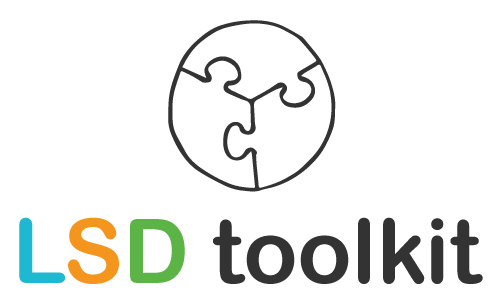How are decisions made in self-direction? Who decides if there is no (final) boss? On this page we look at the aspects that belong to the decision process. And we offer a practical exercise so that teams can experience the decision-making process for self-management first hand.
SELF-MANAGING DECISION EXERCISE
In this short workshop, team members will experience how decision-making works in a self-managing organization.
STEP 0. PREPARATION
– Draw a matrix on the board with the names of all team members on the left and three columns with ‘SELF’, ‘CONSENSUS’ and ‘ADVICE’ above.
STEP 1. ROLE DISTRIBUTION
– Briefly explain the working method. In particular, tell them that in the exercise they work for a large company that produces and supplies boiled potatoes to the consumer market.
– Then divide the group into roles. Everyone receives a sign with his or her most important expertise, such as financial, HR, legal, technical, operational, logistics and so on. Let the team create the signs with the widest possible spectrum of expertise.
STEP 2. CASE
Think of a case on which a decision must be taken. Provide a complex, ambiguous problem with multiple sides, solutions and interests.
– First ask in the group if they can come up with a case. If this doesn’t work or takes too much time, come up with a case yourself that matches the work of the group.
– An example for inspiration: an employee has found a piece of glass in a plastic crate. He is afraid that the glass has ended up in the product. He doubts whether he should stop the entire production line. We call the production employee the problem owner.
STEP 3. DECIDE YOURSELF
In this first form of decision, someone takes the decision himself. This is usually the manager, but in the case of the example, it is the production employee who makes the decision on their own. The problem owner thinks for a moment and then makes and communicates his or her decision.
Then have the participants indicate on the board in the matrix on a scale from 1-10 how satisfied they are with the decision taken and the decision process. For example
6/8 . STEP 4. CONSENSUS
We go back to the case. This time we are going to ensure consensus. The problem owner brings in the problem, and everyone can have their say. The group itself decides how the final decision is made.
Then have the participants indicate on the board in the matrix on a scale from 1-10 how satisfied they are with the decision taken and the decision process. For example 7/6.
STEP 5. DISCUSSION
Discuss the two decision forms with the group on the basis of the appreciation they have given. ask if they know alternatives, ways in which things can be improved.
STEP 6. ADVICE CHOICE
In this third round we will make the choice based on an advisory process. And a tip of the veil: this is how making decisions in self-managing organizations works best.
– The problem owner examines which expertise is required to arrive at the right decision. He / she makes the decision himself / herself, but consults people with the right expertise. When he has spoken to everyone, he makes the decision and communicates it.
Then have the participants indicate on the board in the matrix on a scale from 1-10 how satisfied they are with the decision taken and the decision process. For example 7/8. This can also be done directly in a plenary session.
STEP 7. REVIEW
Discuss the exercise and take a tour to see which lessons the participants have learned from it.
